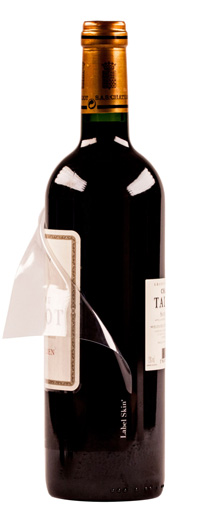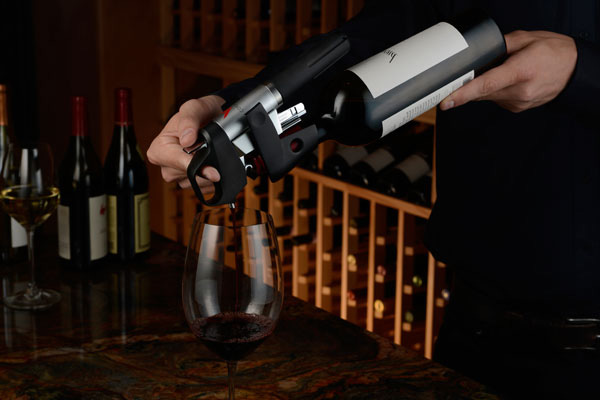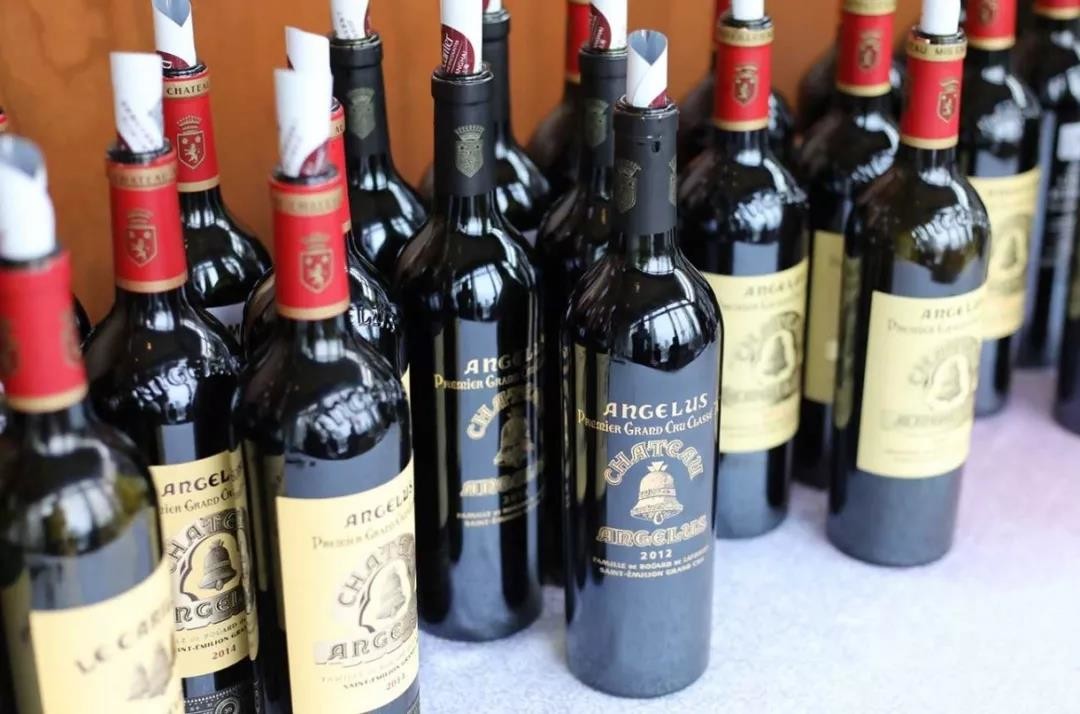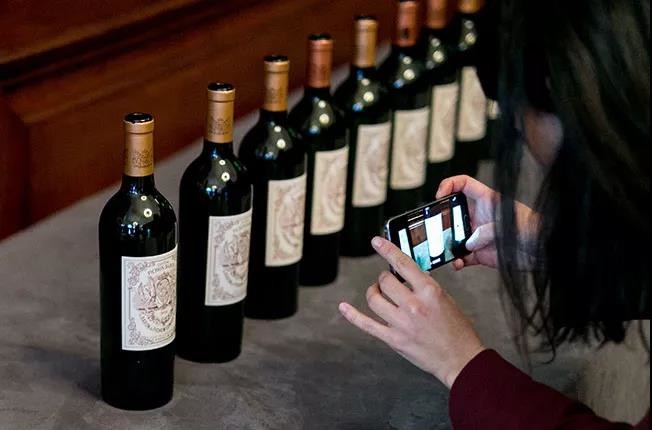I met two inventors this week. One was French, fresh out of college, with a good idea that he was launching on a shoestring. The other was American, plenty of experience, with an idea that has been 12 years in the making and is backed by a team of 100 investors. No prizes for guessing which one I think will still be around in ten years’ time.
First of all, the good idea. Called Label Skin, it responds to the problem of, as inventor Xavier Demeilliers puts it, wine cellars being ‘the perfect environment for storing wine, but the worst possible environment for keeping labels in good condition’. This is due to the humidity; a good cellar is around 95% humidity, which protects the wine from evaporating but is pretty much perfect for stripping off a label.
‘A damaged label can take 40% off the value of a wine at auction,’ says Demeilliers, ‘particularly in Asian markets’.

To correct this, Demeilliers and his partner Maxime Brunet came up with Label Skin, a transparent and adhesive-free piece of vinyl film that covers the wine label before storage. It’s almost invisible and will apparently protect the label for decades in its original condition. I tried it with a few labels, and it seems to be easily removable, so the wine can be served with only the original label showing. They have been trading for six months, and have so far sold 15,000 protectors to wine shops, private collectors and storage facilities such as the Les Caves de Marly in Paris. Inexpensive, and offering a potential solution to a problem that, quite honestly, I hadn’t really thought about before.
Does it have enough potential clients to become a viable business? Maybe, if they manage to get some official partnerships going with auction houses or chateaux, neither of which they have to date. Demeillier himself is a serial entrepeneur (this is his third startup company, although his first in wine), a graduate of the prestigious HEC Montreal business school, and aims to not only run Label Skin, but to act as distributor in France for a host of other wine-related businesses, so perhaps the real story lies with him rather than this particular product.
The second inventor to liven up my week was Greg Lambrecht, a 44-year old American whose background lies in ‘medtech’ as the industry calls it; medical technology devices mainly involving delivery of treatments through specially-adapted needles, as used in spinal taps and chemotherapy treatments. He has used this experience to come up with a device called Coravin that offers the ability to draw small amounts of wine out of a bottle without damaging or removing the cork; replacing the air with the inert gas argon from a small cylinder. In theory, you can then serve a single bottle of wine over many months or even years with no deterioration in quality – as opposed to the usual two or three days before oxidation starts ruining fruit flavours. It has a lot of people very excited, from sommeliers to wine salesman to big name chateaux proprietors such as Claude de Nicolay of Burgundy’s Domaine Chandon de Briailles, and Veronique Sanders of Bordeaux’s Haut-Bailly.
It was at a lunch at Haut-Bailly where I met Lambrecht. I wasn’t the only one who had come to investigate a device that has its fans say things like, ‘I’m a believer’. I was there with Axel Marchal, a professor at the Bordeaux institute of oenology, Mathieu Chadronnier, director of one of Bordeaux’s largest négociant companies, Alexander Van Beek of Chateau Giscours, and Charles Curtis MW, ex head of Christie’s who now runs his own consultancy firm out of New York and is helping launch Coravin in Europe and Asia.
We started off with a blind taste test – four samples of Haut-Bailly 2006, some of which had been ‘accessed’ with Coravin, and some opened normally by pulling the cork. My natural instinct, as with everyone else around the table, was to be sceptical. Needless to say, none of us got it right.
In theory, according to Lambrecht, wine will remain unchanged in the bottle for decades, just as if nothing had been removed at all. ‘The wine will stay good just as long as the cork does,’ he says. As the (impartial) scientist among us, I was most interested in what Marchal had to say. ‘I would question whether there will be changes in oxidation potential as the level of the bottle goes down,’ he said, ‘and whether there is potential to have volatile acidity levels rise due to changes in chemistry of the wine and greater exposure to oxygen. But on taste tests so far, I have not seen this, and would need to examine it chemically’. He is looking to set up tests at the institute of oenology.
Coravin looks like nothing so much as a microscope, or perhaps one of the oversized Screwpull corkscrews that were the must-have wine gadgets in the 1990s. It looks scarily efficient, and would be right at home in the laboratories where Lambrecht got his two engineering degrees from MIT and today does most of his medical research, but it grew out of a far more lowly impulse, ‘My wife became pregnant, and I was no longer able to share a full bottle of wine with her. I didn’t want to finish the whole thing off, and thought there had to be a better way to safeguard wine than currently existed.’

This was back in 2000, when he applied his experience with needles to the problem, and spent three years experimenting to get the technology to work (its name at the time was Wine Mosquito, as the needle mimics the insect’s feeding mechanism). From 2003 until 2011 Lambrecht went through dozens of trials with different needles, types of gas, and types of wine, then in 2011 started the company and began working on getting the product to market, officially launching in mid 2013. He is on version 28 at this point, offering three sizes of medical-grade needles – one for delicate corks on vintage wines, one for normal (young) wines and one with a faster-flow, mainly for restaurants to pour the wine by the glass. The needles are made in the United States, the argon gas comes from Austria, and the entire thing is then assembled in China before being shipped back to the States for final delivery to customers (ironically it is not currently allowed to be shipped back into China, due to government regulations over imports of foreign gases, although it can be shipped to Hong Kong). And it’s finding an audience fast; the business plan aimed to sell 7,000 Coravins by the end of 2013, and they have already moved over three times that number.
There are clearly questions that remain – is there the possibility for misuse by wine forgers, who can remove the ‘real’ wine and replace it with a cheaper alternative? (‘The needle only works one way’ says Lambrecht, ‘and anyway there are far easier ways to get wine out of a bottle without removing the cork if you really want to.’) Is it just too clinical to work in the traditional world of wine? And will it find a big enough audience willing to pay the US$300 price tag to really get any mass appeal going beyond wine geeks (the investors in particular might care about this, as in its last round of funding, in February 2013, they put in more than US$11 million)? Coravin is new, and for now remains another expensive wine gadget. It will take more time to really prove its worth, but speaking as someone who sees new wine gadgets appearing with great regularity, from aerators to cellar management systems to overprice corkscrews, I can tell you that everyone sitting around the table at lunch was clearly thinking (and most of them saying), ‘when can I get one?’.

Columnist Introduction
Jane Anson is Bordeaux correspondent for Decanter, and has lived in the region since 2003. She is author of Bordeaux Legends, a history of the First Growth wines (October 2012 Editions de la Martiniere), the Bordeaux and Southwest France author of The Wine Opus and 1000 Great Wines That Won’t Cost A Fortune (both Dorling Kindersley, 2010 and 2011). Anson is contributing writer of the Michelin Green Guide to the Wine Regions of France (March 2010, Michelin Publications), and writes a monthly wine column for the South China Morning Post in Hong Kong, where she lived from 1994 to 1997. Accredited wine teacher at the Bordeaux Ecole du Vin, with a Masters in publishing from University College London.
Click here to read all articles by Jane Anson>>
- Follow us on Weibo @Decanter醇鉴 and Facebook
and Facebook for most recent news and updates -
for most recent news and updates -
All rights reserved by Future plc. No part of this publication may be reproduced, distributed or transmitted in any form or by any means without the prior written permission of Decanter.
Only Official Media Partners (see About us) of DecanterChina.com may republish part of the content from the site without prior permission under strict Terms & Conditions. Contact china@decanter.com to learn about how to become an Official Media Partner of DecanterChina.com.



Comments
Submit